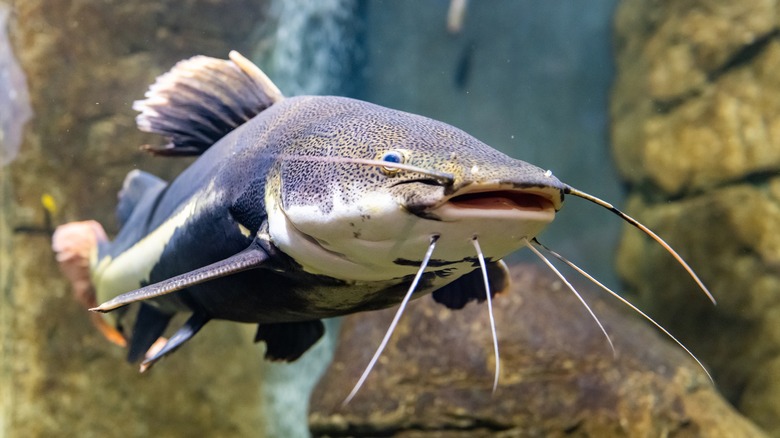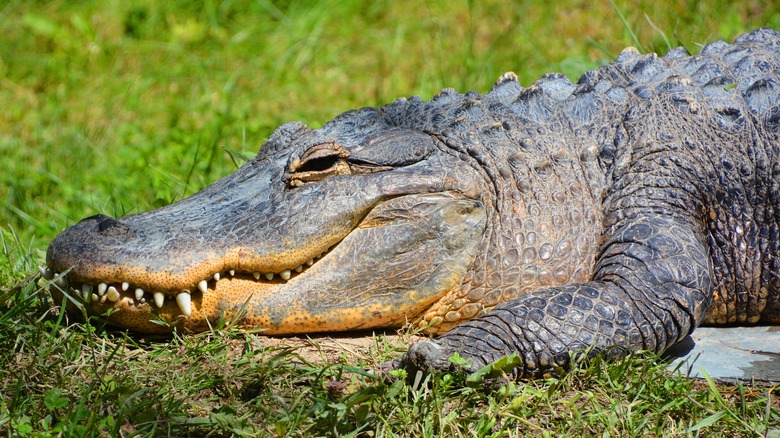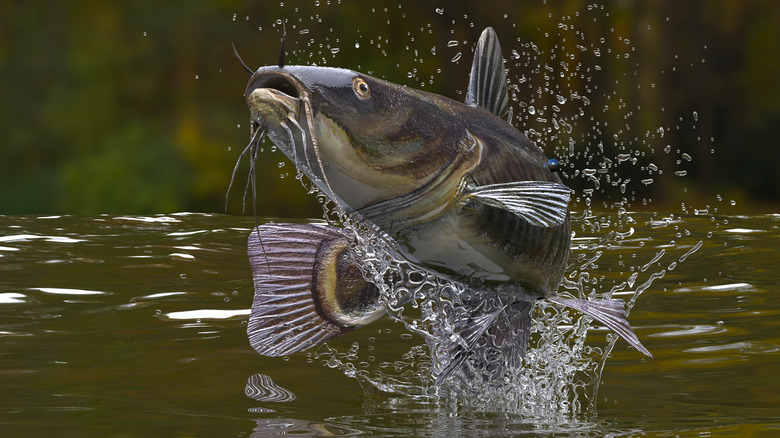Why Alabama Scientists Genetically Modified A Catfish With Alligator DNA
There's no getting away from the tragic fact that human activity can play a big part in the endangering and even extinction of global species. In May 2019, the Intergovernmental Science-Policy Platform on Biodiversity and Ecosystem Services (IPBES) stated in a media release that a million species around the globe were in danger of ultimate extinction.
Sir Robert Watson of the IPBES said of the findings, "We are eroding the very foundations of our economies, livelihoods, food security, health and quality of life worldwide." Humankind does have an unfortunate tendency to look out for number one, but to battle in defense of all living species on the planet is, by extension, to claw back a future for ourselves, too. Why can't we all get along? Well, we can, and we must.
Scientists are engaged in a huge range of innovative and ingenious projects to help accomplish this. In one curious example, the DNA of alligators is being used to try and help catfish develop a certain superpower that alligators seem to have. Crocodiles and alligators are some of the oldest and most fearsome creatures on the planet. According to Britannica, crocodilians evolved as distantly as 228.7 million years ago during the Late Triassic, and though they've changed a lot since, various species still survive today.
Why you never see an alligator at the doctor's surgery
As Guinness World Records reports, alligators can live for a very long time. The outlet stated in May 2018 that the famous Muja, an alligator at the Belgrade Zoo, was believed to be the oldest captive specimen. Muja's exact age is unknown, but the report states that "he was at least 80 years 252 days" when he nabbed the world record.
One big plus that they have going for them when it comes to long-term survival is their extraordinary resistance to disease. In February 2015, Barney M. Bishop, along with other researchers, published the study "Bioprospecting the American Alligator (Alligator mississippiensis) Host Defense Peptidome" (via PLOS One). Using samples of blood from specimens at the St. Augustine Alligator Farm Zoological Park, the researchers determined that "evaluation of ... eight peptides led to the identification of five novel alligator peptides that demonstrate antimicrobial activity."
The project's Monique van Hoek said, per Science Daily, "I was surprised to find peptides that were as effective as they are in fighting bacteria." With their habitat and diets in mind, the outlet goes on, this may be a necessity, but the DNA could also have huge implications elsewhere. It could, perhaps, make disease-prone creatures like catfish a little less vulnerable.
The crucial catfish cathelicidin
In 2018, the Global Seafood Consumption Footprint (via Springer Link) reported that seafood is a large component of the world's intake of animal proteins and that as the world's population increases further, limited resources would be further strained. The key would be to ensure that limited sustainable resources are protected as far as possible.
In January 2023, per the MIT Technology Review, Auburn University's Rex Dunham stated that only 60% of the planet's catfish stock survives an untimely death by disease. The genetic scientist and his team set about making a very specific tweak to catfish DNA to try and resolve this issue. The protein cathelicidin, which appears to be part of the secret to alligators' disease resistance, was added to the DNA of the fish using a nifty piece of kit called CRISPR. CRISPR, per Britannica, gives the ability to alter DNA precisely.
The Auburn team, per MIT Technology Review, found that the cathelicidin in the DNA of the fish seemed to have a strong positive effect. In the inevitable experiments involving modified and non-modified fish and microbe-infected water that followed, Dunham reported, "survival rate of the cathelicidin transgenic fish was between two- and five-fold higher." The project appears to have great potential, but it's at a very early stage. It has yet to be seen whether wider application of this genetic modification would be possible and how positive the results may be.


